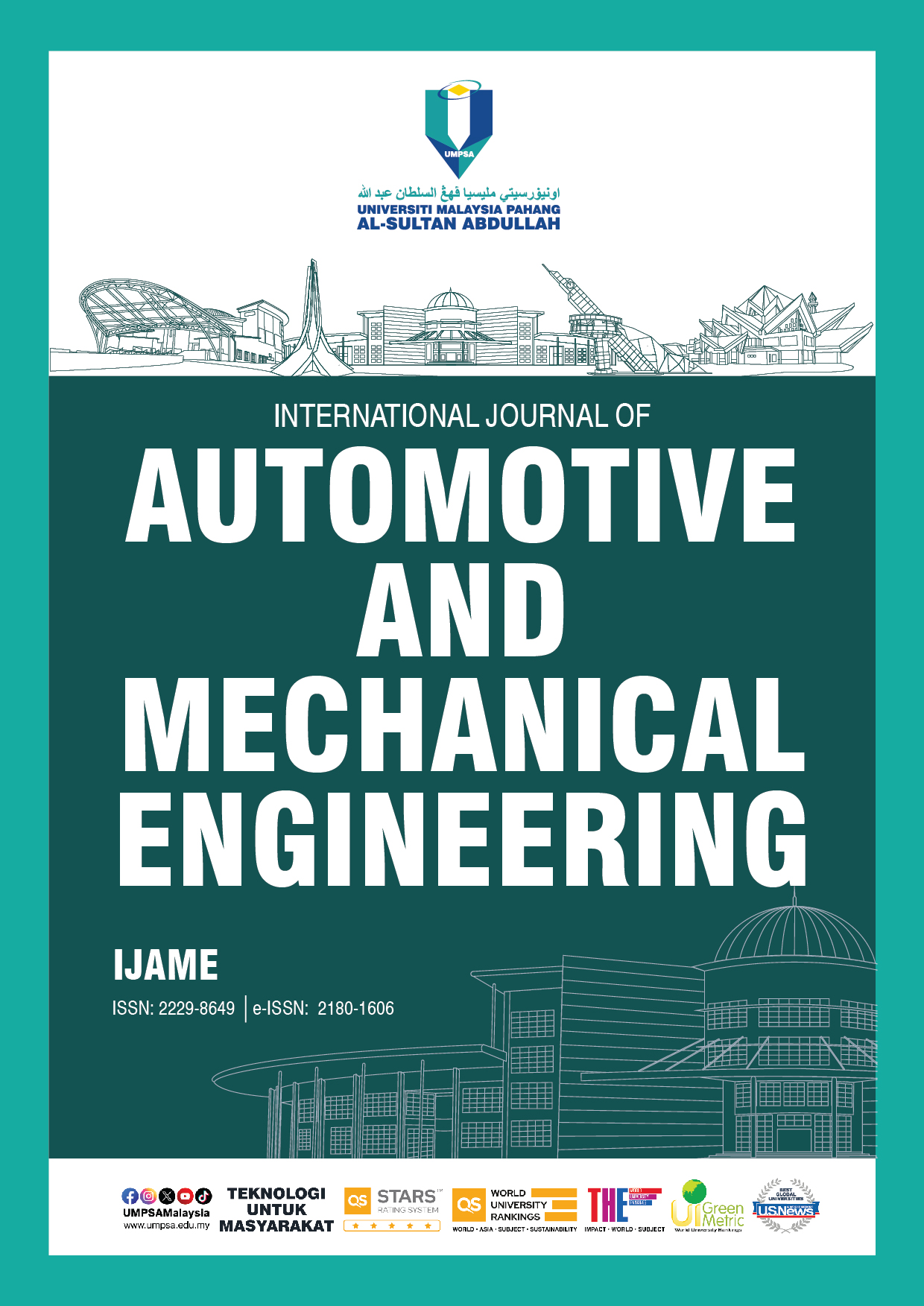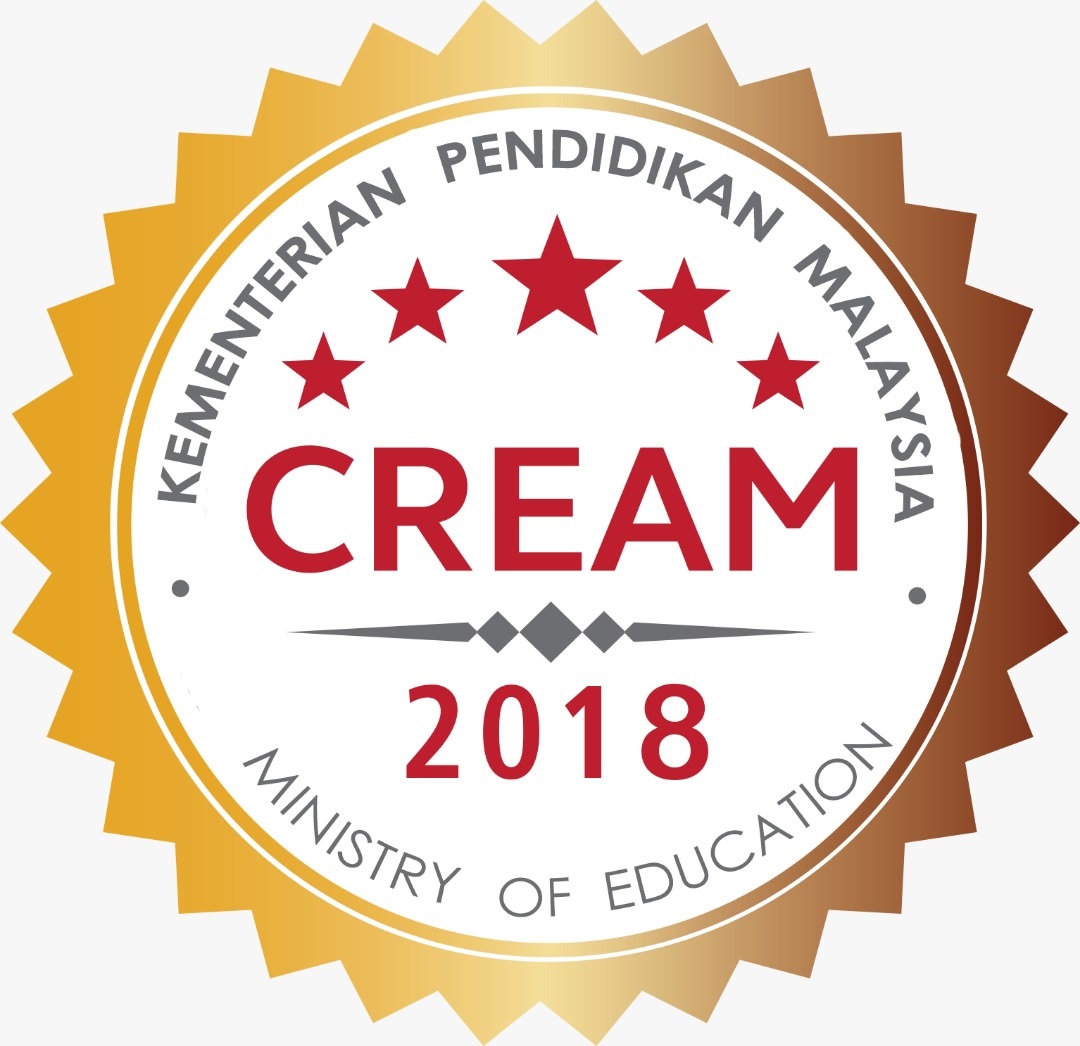Experimental Analysis of Thermal and Hydraulic Performance of Fiber-Reinforced Polymer Fins in Compact Heat Exchangers
DOI:
https://doi.org/10.15282/ijame.22.2.2025.18.0955Keywords:
Carbon Nanotube, Compact Heat Exchanger, Heat Transfer Coefficient, Efficiency of Heat Exchanger, Pressure Drop, Thermal Performance IndexAbstract
At present, the significance of fiber-reinforced polymer (FRP) material in fins-and-tube heat exchangers (HEs) has become critical in the thermal industrial sector. This is due to its advantages, such as lightweight nature, ease of manufacturing, and superior resistance to environmental conditions compared to metal materials. The utilization of FRP fins-and-tube heat exchangers has generated considerable interest among researchers, given their pivotal role in various thermal engineering systems. However, the use of carbon nanotube-reinforced polymers (CNTRP) fins in fin-and-tube heat exchangers has not been thoroughly examined, highlighting the need for a comprehensive study. This research aimed to design and fabricate a compact heat exchanger by integrating (CNTRP) fins with copper tubes to create a fully functional heat exchanger unit. The study also assessed the performance of the CNTRP fins by analyzing various geometric and process parameters and investigating their thermal and hydraulic characteristics. Experiments were conducted to evaluate the influence of parameters, such as the number of fins (no fin, six, eight, twelve fins), tube diameter (6.5, 8, 9.5 ), inlet air flow velocity (2.4, 2.9, 3.2, 3.4, and 3.6 ), and inlet temperature (40, 60, and 80 ) on the thermal-hydraulic performance of the heat exchanger. The major findings showed that (CNTRP) fins have a positive impact on heat transfer enhancement, the greater the number of fins, from no fins to six, eight, and twelve fins, the heat transfer coefficient improved by 6%, 10.77%, and 17%, respectively. Meanwhile, the pressure drop rose by 5.8%, 7.4%, and 9% with the same increase in the number of fins. However, this improvement in heat transfer coefficient is accompanied by a rise in pressure drop. Consequently, it is crucial to identify the trade-off in heat exchanger design whereby the increase in pressure drop penalty is weighed against the improvement in heat transfer efficiency.
References
[1] S Han, X Li, Z Liu, B Zhang, C He, and Q Chen, “Thermal-economic optimization design of shell and tube heat exchanger using an improved sparrow search algorithm,” Thermal Science and Engineering Progress, vol. 45, p. 102085, 2023.
[2] S Boldyryev, T Gil, and M Ilchenko, “Environmental and economic assessment of the efficiency of heat exchanger network retrofit options based on the experience of society and energy price records,” Energy, vol. 260, p. 125155, 2022.
[3] K. Rajski and J. Danielewicz, “Heat transfer and heat recovery systems,” Energies, vol. 16, no. 7, p. 3258, 2023.
[4] M. Hamood, A. N. Oumer, A. Abd Aziz, M. Ishak, J. P. Siregar, and O. Mamat, “Heat transfer analysis in compact heat exchanger with fibre reinforced plate,” IOP Conf Ser Mater Sci Eng, vol. 1078, no. 1, p. 012036, 2021.
[5] M. Chaanaoui, K. Ettahi, S. Abderafi, S. Vaudreuil, and T. Bounahmidi, “Comparative analysis between optimum configurations of finned tube heat exchanger: Application for solar drying,” Case Studies in Thermal Engineering, vol. 22, p. 100750, 2020.
[6] K. Barquín and A. Valencia, “Comparison of different fin and tube compact heat exchanger with longitudinal vortex generator in CFU-CFD configurations,” International Journal of Heat and Technology, vol. 39, no. 5, pp. 1523–1531, 2021,
[7] Q Li, G Flamant, X Yuan, P Neveu, and L Luo, “Compact heat exchangers: A review and future applications for a new generation of high temperature solar receivers,” Renewable and Sustainable Energy Reviews, vol. 16, no. 2, 721–733, 2012.
[8] M. A. Arie, A. H. Shooshtari, R. Tiwari, S. V. Dessiatoun, M. M. Ohadi, and J. M. Pearce, “Experimental characterization of heat transfer in an additively manufactured polymer heat exchanger,” Applied Thermal Engineering, vol. 113, pp. 575–584, 2017.
[9] M. Nakada and Y. Miyano, “Accelerated testing for long-term fatigue strength of various FRP laminates for marine use,” Composites Science and Technology, vol. 69, no. 6, pp. 805–813, 2009.
[10] X. He and Y. Wang, “Recent advances in the rational design of thermal conductive polymer composites,” Industrial & Engineering Chemistry Research, vol. 60, no. 3, pp. 1137–1154, 2021.
[11] A. R. Cardenas, C. S. Davis, and A. M. Marconnet, “Liquid metal concentration effects on thermal and mechanical properties in elastomers,” in 2024 23rd IEEE Intersociety Conference on Thermal and Thermomechanical Phenomena in Electronic Systems (ITherm), pp. 1–2, 2024.
[12] X. Meng, H. Yu, L. Wang, X. Wu, and B. U. Amin, “Recent progress on fabrication and performance of polymer composites with highly thermal conductivity,” Macromolecular Materials and Engineering, vol. 306, no. 11, p. 2100434, 2021.
[13] A. Li, C. Zhang, and Y. F. Zhang, “Thermal conductivity of graphene-polymer composites: Mechanisms, properties, and applications,” Polymers (Basel), vol. 9, no. 9, pp. 1–17, 2017.
[14] D. K. Lee, J. Yoo, H. Kim, B. H. Kang, and S. H. Park, “Electrical and thermal properties of carbon nanotube polymer composites with various aspect ratios,” Materials, vol. 15, no. 4, p. 1356, 2022.
[15] A. Pathak, J. AuBuchon, D. Brei, J. Shaw, J. Luntz, and S. Jin, “Carbon nanotube (CNT) fins for enhanced cooling of shape memory alloy wire,” In Behavior and Mechanics of Multifunctional and Composite Materials 2008, vol. 6929, p. 69291K, 2008.
[16] Z. Han and A. Fina, “Thermal conductivity of carbon nanotubes and their polymer nanocomposites: A review,” Progress in Polymer Science, vol, 36, no. 7, 914–944, 2011.
[17] B Kumanek and D Janas, “Thermal conductivity of carbon nanotube networks: A review,” Journal of Materials Science, vol. 54. no. 13, 8929–8964, 2019.
[18] X. Zheng, B. R. Kim, S. J. Hong, J. G. Lee, and C. W. Park, “Heat transfer analysis of carbon fiber-reinforced corrugated polymer plate heat exchangers,” Applied Thermal Engineering, vol. 244, p. 122684, 2024.
[19] S. G. Mavridou, E. Konstandinidis, and D. G. Bouris, “Experimental evaluation of pairs of inline tubes of different size as components for heat exchanger tube bundles,” International Journal of Heat and Mass Transfer, vol. 90, pp. 280–290, 2015.
[20] J. Cobian-Iñiguez, A. Wu, F. Dugast, and A. Pacheco-Vega, “Numerically-based parametric analysis of plain fin and tube compact heat exchangers,” Applied Thermal Engineering, vol. 86, pp. 1–13, 2015.
[21] J. Jabbour, S. Russeil, M. Mobtil, D. Bougeard, M. F. Lacrampe, and P. Krawczak, “High performance finned-tube heat exchangers based on filled polymer,” Applied Thermal Engineering, vol. 155, pp. 620–630, 2019.
[22] S. A. Marzouk, M. M. Abou Al-Sood, E. M. S. El-Said, M. M. Younes, and M. K. El-Fakharany, “A comprehensive review of methods of heat transfer enhancement in shell and tube heat exchangers,” Journal of Thermal Analysis and Calorimetry, vol. 151, no. 8, 5037–5065, 2023.
[23] A. Wibolo, A. A. I. Made, “Experimental study of air velocity effect of heat transfer in distillation condenser,” IOP Conference Series: Materials Science and Engineering, vol. 1175, no. 1, p. 012014, 2021.
[24] J. Zhuang, M. Liu, H. Wu, and J. Wang, “Designing an environmental wind tunnel cooling system for high-speed trains with air compression cooling and a sensitivity analysis of design parameters,” Entropy, vol. 25, no. 9, p. 1312, 2023.
[25] M. Khaled, “Enhancing thermal performance of water–air cross-flow heat exchangers through upstream nozzle design and unit division” International Journal of Thermofluids, vol. 27, p. 101223, 2025.
[26] D. A. Kamel, M. A. Gadalla, O. Y. Abdelaziz, M. A. Labib, and F. H. Ashour, “Temperature driving force (TDF) curves for heat exchanger network retrofit – A case study and implications,” Energy, vol. 123, pp. 283–295, 2017.
[27] B. Gong, L. B. Wang, and Z. M. Lin, “Heat transfer characteristics of a circular tube bank fin heat exchanger with fins punched curve rectangular vortex generators in the wake regions of the tubes,” Applied Thermal Engineering, vol. 75, pp. 224–238, 2015.
[28] F. Tagliaferri, L. Carrera, A. Albertini, M. Invernizzi, and S. Sironi, “The development and optimization of a new wind tunnel design for odour sampling,” Atmosphere, vol. 15, no.10, p. 1181, 2024.
[29] L. Zhao, J. Chen, and G. Duan, “Turbulent flow in an I–L junction: Impacts of the pipe diameter ratio,” Physics of Fluids, vol. 36, no. 2, p. 025122, 2024.
[30] R. A. Hussein, A. A. Alwan, and I. M. Abed, “Experimental investigation and analysis of heat transfer rate in conical tube heat exchanger: A novel enhancement approach,” Journal of Engineering Science and Technology, vol, 16, no. 2, 61–74, 2021.
[31] K. Shahril, N. B. M. Kasim, and M. Sabri, “Heat transfer simulation of motorcycle fins under varying velocity using CFD method,” IOP Conference Series: Materials Science and Engineering, vol. 50, no. 1, p. 012043, 2013.
[32] L. Miao, R. Wan, H. Wu, Z. Liu, and S. Wang, “Heat transfer and pressure drop characteristic research of sine wavy flying-wing fins,” Scientific Reports, vol. 13, p. 15589, 2023.
[33] K. Rauthan, F. Guzzomi, A. Vafadar, K. Hayward, and A. Hurry, “Experimental investigation of pressure drop performance of smooth and dimpled single plate-fin heat exchangers,” Metals, vol. 11, no. 11, p. 1757, 2021.
Downloads
Published
Issue
Section
License
Copyright (c) 2025 The Author(s)

This work is licensed under a Creative Commons Attribution-NonCommercial 4.0 International License.







